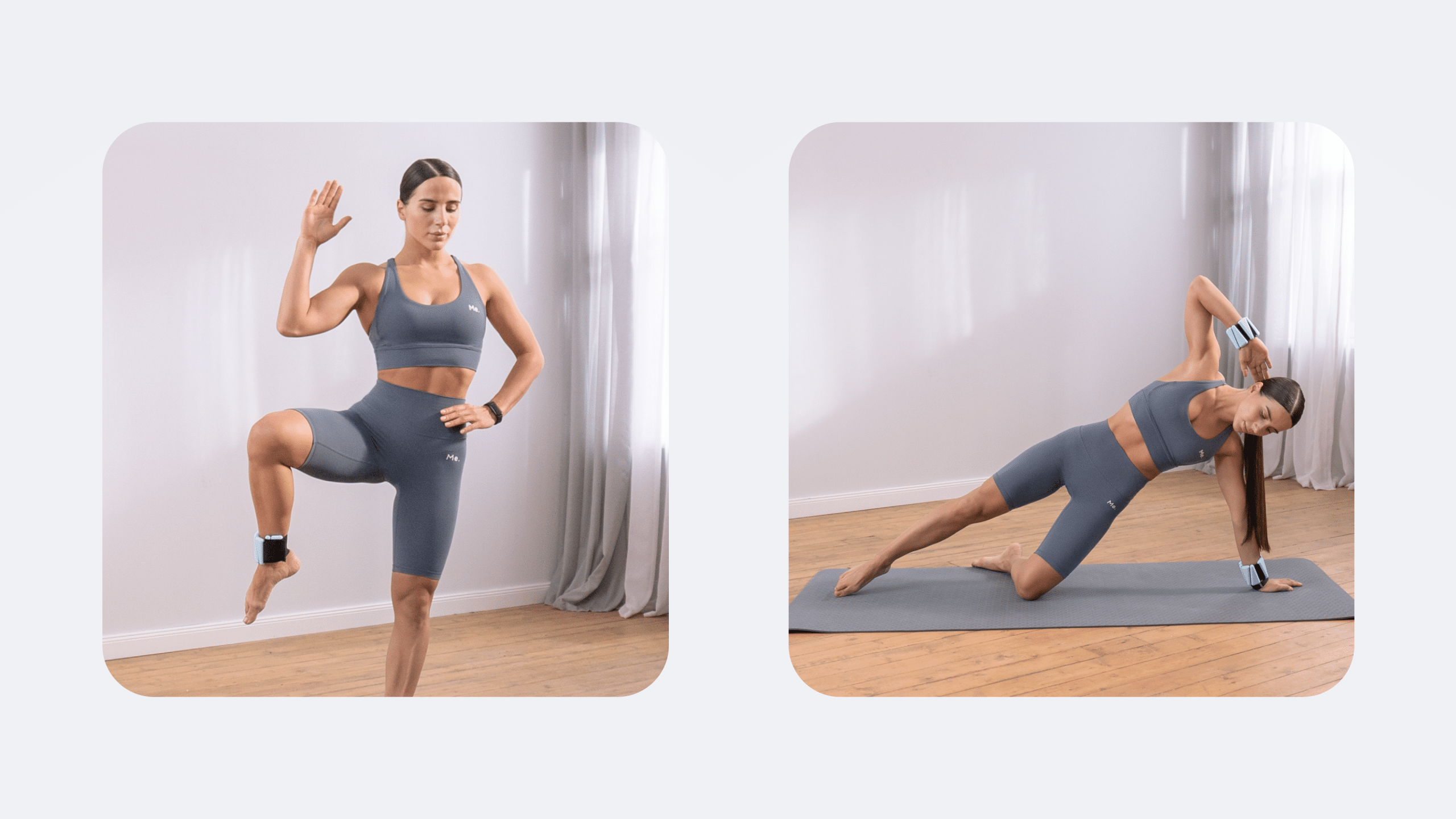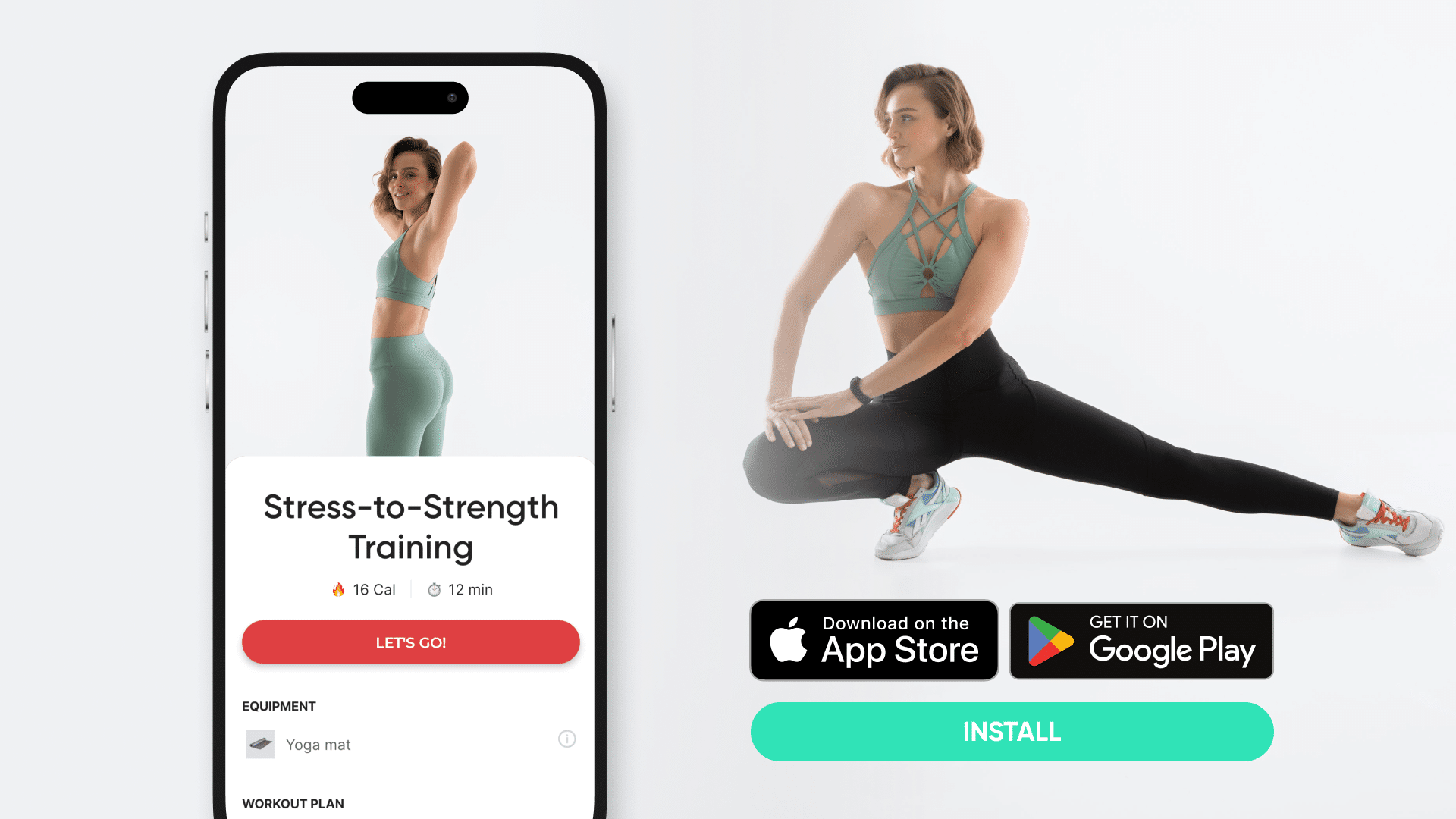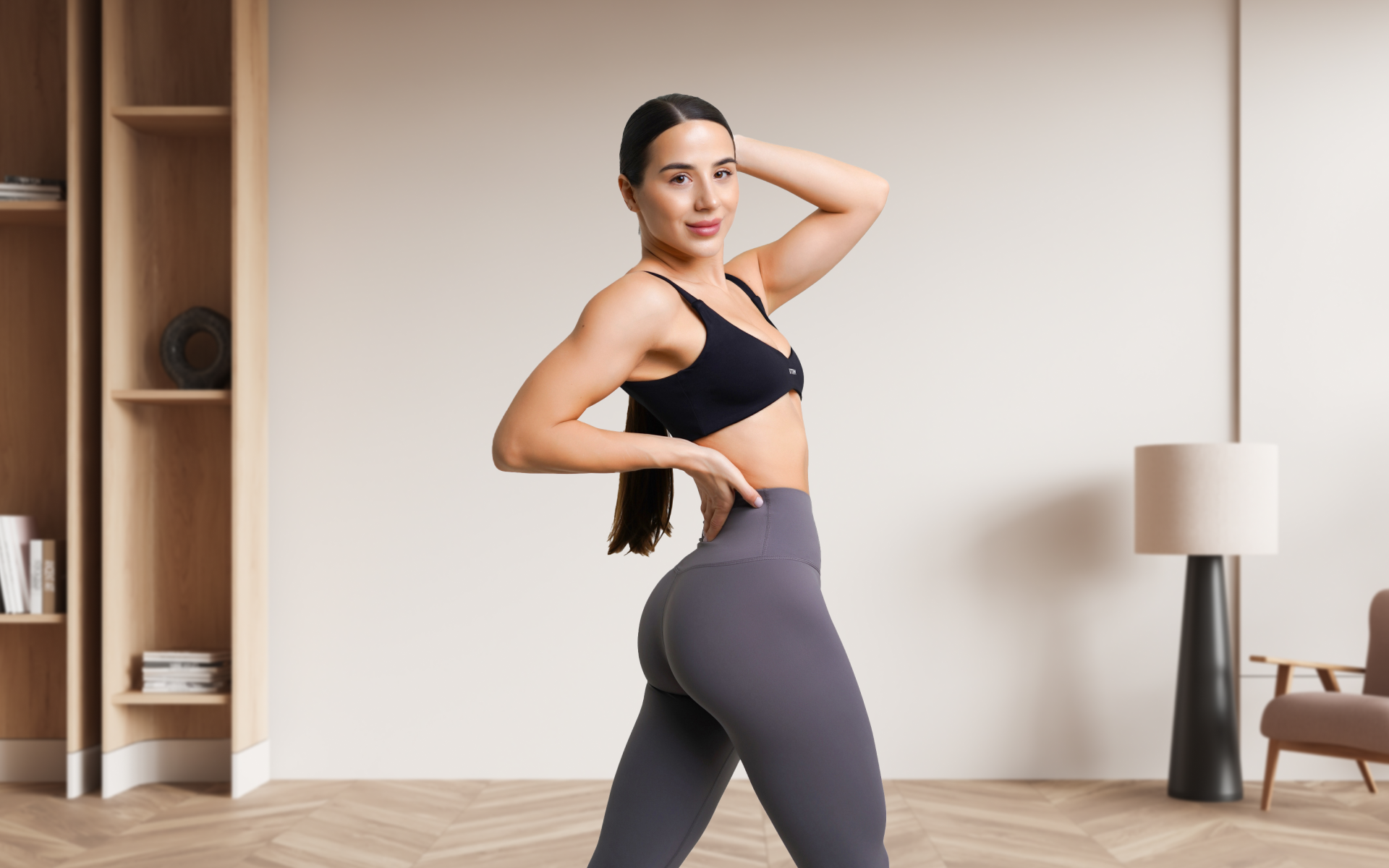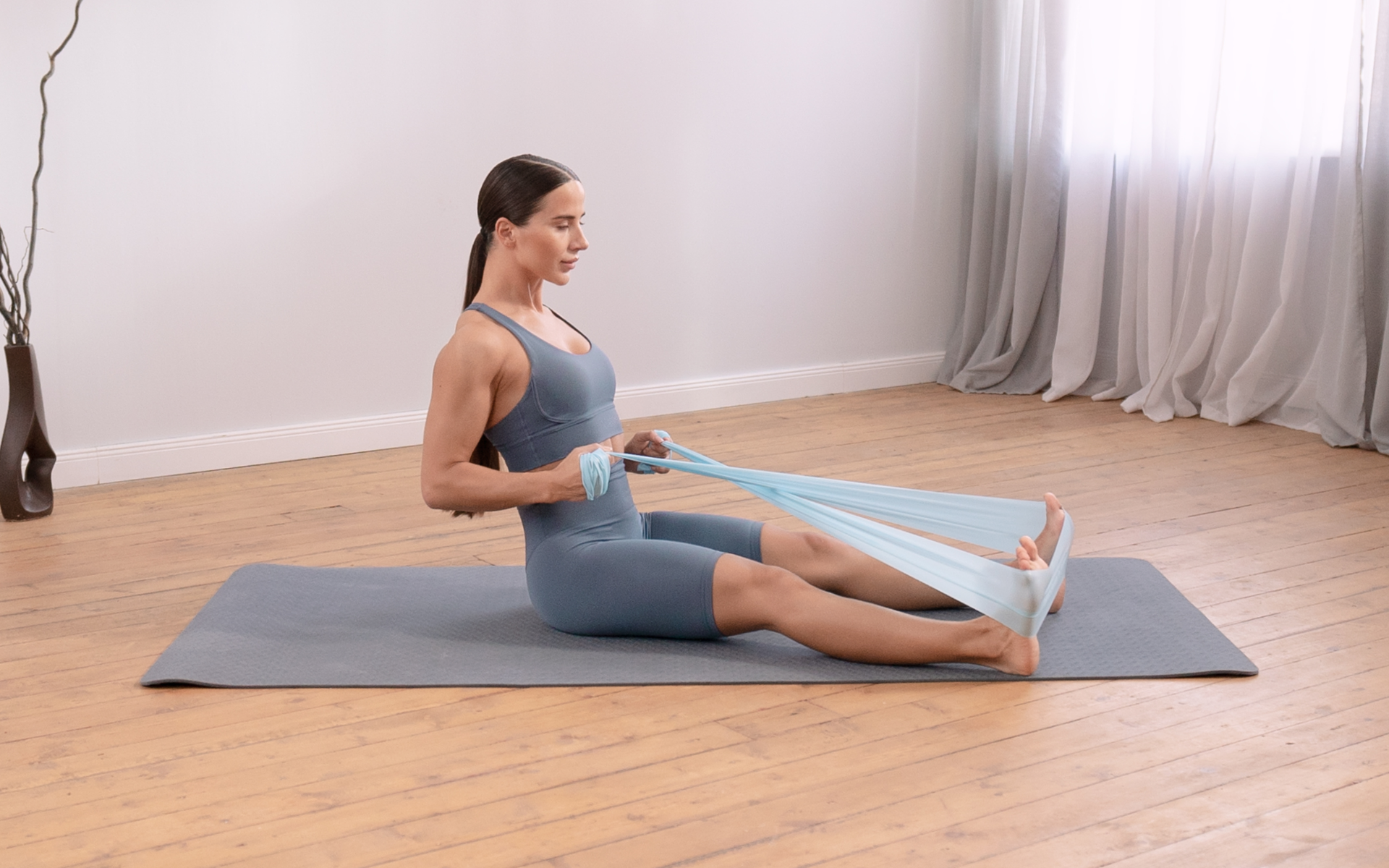Not seeing results from your calisthenics routine can be frustrating, especially after you’ve been putting in the time and effort. Before you give up on calisthenics altogether, consider incorporating some advanced techniques into your routine.
Progressively increasing the difficulty of your calisthenics exercises is key to building strength and muscle mass (1). Your body will adapt and become stronger when you challenge it with new, more difficult movements.
We’ll walk you through some advanced calisthenics exercises and tips to help you break through plateaus and achieve your fitness goals.
What Are Advanced Calisthenics Exercises?
Advanced calisthenics exercises are movements that require a high level of strength, balance, and control. These exercises are typically more complex variations of basic calisthenics movements such as push-ups, pull-ups, and squats.
This added challenge forces your muscles to work harder, which leads to increased muscle growth and strength gains (1). Advanced calisthenics exercises also engage multiple muscle groups at once, making them more efficient for building functional strength.
What Is the Hardest Calisthenics Skill?
The hardest calisthenics skill varies based on an individual’s strength, experience, and goals. Different skills need different levels of strength, balance, and control. What is difficult for one person might be easier for another, depending on their physical attributes and training background.
That said, many consider the muscle-up the hardest calisthenics skill due to its technicality and upper body strength demands. It’s a mix of a pull-up and a dip, requiring not just strength but also precise technique and coordination. Mastering the muscle-up often marks a major milestone in a calisthenics journey.
Others may find handstand push-ups or front lever holds more challenging. Handstand push-ups need exceptional shoulder strength and balance, as you support your body weight upside down. The front lever requires incredible core strength to stay horizontal while hanging from a bar, a skill that can take years to master.
Regardless of which skill is deemed the hardest, it’s important to focus on consistent practice and progression, rather than comparing yourself to others.
In our previous blog, we discussed Types Of Calisthenics.
How To Train Advanced Calisthenics?
Training with advanced calisthenics should be approached with caution, and should not be attempted by beginners. It’s essential to have a strong foundation in basic calisthenics exercises before attempting more advanced variations. Before moving on to advanced techniques:
1. Ensure Proper Form and Technique
Before attempting any advanced calisthenics exercises, make sure you have a solid understanding of basic form and technique. This will help prevent injuries and ensure you’re targeting the intended muscle groups (2).
2. Focus on Progressive Overload
Just like with weightlifting, progressive overload is crucial for gaining strength and building muscle in calisthenics (1). Gradually increase the difficulty of your exercises by adding reps, changing leverage or range of motion, or incorporating new variations.
3. Incorporate Compound Movements
Advanced calisthenics exercises often involve compound movements that engage multiple muscle groups at once (3). This is not only efficient for building strength but also mimics real-life functional movements.
Read More: A 10-Minute Calisthenics Workout You Can Do At Home Without Equipment
4. Prioritize Mobility and Flexibility
Advanced calisthenics exercises often require a greater range of motion. Incorporating exercises that improve your flexibility and mobility can help you perform these movements more effectively and reduce the risk of injury (4). Activities such as yoga or dynamic stretching can be a beneficial supplement to your calisthenics training.
5. Listen to Your Body
Pushing through pain can lead to serious injuries. Pay attention to how your body responds to advanced exercises. If you feel unusual pain or discomfort, take a break or modify the exercise. Rest and recovery are just as important as training intensity.
6. Use Supportive Equipment Wisely
Resistance bands, gymnastic rings, and parallettes can be valuable tools for progressing in advanced calisthenics. They can help you work on difficult movements by providing support and adjusting the difficulty level gradually.
7. Track Your Progress
Keeping a log of your workouts can help you stay motivated and track your improvements over time. Record the number of reps, sets, and variations of exercises you perform to identify areas for further development.
8. Stay Consistent and Patient
Mastering advanced calisthenics exercises takes time and dedication. Consistency is key to making progress. Stay patient and focus on small, incremental improvements rather than aiming for rapid gains.
By integrating these tips into your training routine, you’ll be well-equipped to conquer advanced calisthenics exercises and achieve your fitness goals.
That being said, equipment does come in handy and can help you better perform these advanced exercises. Some recommended equipment to try out includes:
- Pull-up bar: A pull-up bar is a staple for any calisthenics training. It can be used for a variety of exercises, including pull-ups, chin-ups, and muscle-ups.
- Resistance Bands: Resistance bands can be used in a variety of ways to add resistance and assistance to your calisthenics exercises. They are especially helpful for improving form and building strength in advanced movements such as the muscle-up.
- Gymnastic Rings: Gymnastic rings provide an unstable surface, forcing your muscles to work harder and develop greater stability. They are great for progressing in skills like dips, pull-ups, and front levers.
- Parallettes: Parallettes are small parallel bars that allow for a greater range of motion in exercises like handstand push-ups or L-sits. They also provide added support for wrist, elbow, and shoulder joints.
- Weighted Vest: A weighted vest can add extra resistance to your bodyweight exercises, making them more challenging and effective. This is a useful tool for progressing in advanced calisthenics exercises like one-arm push-ups or pistol squats.
- Foam Roller: Foam rolling can be an excellent way to relieve muscle tension and improve mobility, which is crucial for performing advanced calisthenics movements with proper form.
Advanced Calisthenics Exercises List
Adding advanced calisthenics exercises into your routine can add a whole new level of challenge and excitement. Here are some advanced calisthenics exercises:
- Muscle-ups
- Handstand push-ups
- Front levers
- Planche
- Human flag
- V-sits
- L-sit to handstand
We’ll look at each exercise in detail.
1. Muscle-Ups
A muscle-up combines both a pull-up and a dip in one fluid motion, requiring explosive upper body strength and coordination. This exercise primarily targets the back muscles, specifically the latissimus dorsi, along with the shoulders, chest, and triceps.
Equipment Needed
- Pull-up bar
- Resistance bands (optional)
Steps
- Grip the Bar: Start by gripping the bar with an overhand grip, hands slightly wider than shoulder-width apart.
- Hang: Hang from the bar with your arms fully extended and your body slightly hollow.
- Pull Up Explosively: Initiate an explosive pull-up by driving your elbows down and pulling your chest toward the bar.
- Transition: As your chest reaches the bar, lean forward and transition into a dip by rotating your wrists.
- Dip Up: Push your body above the bar by extending your arms fully.
- Lock Out: Ensure your elbows are locked out at the top position.
- Descend: Reverse the movement by carefully lowering yourself back to the starting position.
Whether you’re looking to simply pep up your fitness routine, jazz up your diet with mouth-watering low-calorie recipes or want to get your act together and significantly drop that number on your scale – BetterMe app has got you covered! Improve your body and revamp your life with us!
2. Handstand Push-Ups
Handstand push-ups are a challenging exercise that involves pressing your bodyweight in a handstand position. This exercise primarily targets the shoulders, triceps, and upper chest.
Equipment Needed
- Wall (for balance)
- Parallettes (optional)
Steps
- Place Hands on Ground: Place your hands shoulder-width apart on the ground, close to a wall.
- Kick Up Into Handstand: Kick up into a handstand position, using the wall for support.
- Stabilize: Engage your core and stabilize at the top of the handstand.
- Lower Down: Slowly lower your body by bending your elbows until your head nearly touches the ground.
- Press Up: Push through your palms to extend your arms back to the starting position.
- Balance: Maintain your balance throughout the movement.
- Descend: Carefully descend from the handstand after completing your reps.
3. Front Levers
The front lever is an impressive strength move that requires holding your body horizontally while hanging from a bar. It targets the core, specifically the abdominals, along with the lats and lower back.
Equipment Needed
- Pull-up bar
- Resistance bands (optional)
Steps
- Grip the Bar: Grab the bar with an overhand grip, hands shoulder-width apart.
- Lean Back: Lean back while engaging your core.
- Raise Legs: Lift your legs until your body forms a horizontal line with the bar.
- Hold Position: Hold this position, keeping your body rigid and parallel to the ground.
- Engage Core: Keep your core tight to maintain the position.
- Breathe Consistently: Maintain steady breathing throughout the hold.
- Lower Down: Slowly lower yourself back to the starting position.
4. Planche
A planche is a static hold where the body is parallel to the ground, supported by the arms only. This exercise requires tremendous strength in the shoulders, chest, and core.
Equipment Needed
- Parallettes or flat surface
Steps
- Place Hands on Parallettes: Position your hands on parallettes or a flat surface.
- Lean Forward: Lean your body forward, engaging your core.
- Lift Feet: Lift your feet off the ground, aiming to keep your body parallel.
- Engage Shoulders: Press through your shoulders and engage your chest muscles.
- Hold Position: Hold the planche position while keeping your body straight.
- Maintain Balance: Use your core to maintain balance and stability.
- Descend Slowly: Carefully lower your feet back to the ground.
5. Human Flag
The human flag is an advanced calisthenics move where the body is held horizontal while gripping a vertical pole, resembling a flag. It primarily targets the obliques, lats, and shoulders.
Equipment Needed
- Sturdy vertical pole or bar
Steps
- Grip the Pole: Grip the pole with one hand high and the other at waist level.
- Engage Core: Tighten your core muscles.
- Kick Up: Kick your legs up to achieve a horizontal position.
- Straighten Body: Keep your body straight and aligned.
- Hold Position: Maintain the horizontal flag position.
- Breath Control: Continue breathing steadily.
- Lower Gently: Lower your legs back down carefully after the hold.
Read More: Calisthenics Training 101: Everything You Should Know to Get Started
6. V-Sits
V-sits are a core-intensive exercise where you form a ‘V’ shape with your body. It primarily targets the abdominals and hip flexors.
Equipment Needed
- Flat surface
Steps
- Sit on Surface: Begin by sitting on the ground with legs extended.
- Lean Back Slightly: Lean back slightly and lift your legs off the ground.
- Raise Arms: Extend your arms towards your feet.
- Engage Core: Engage your core to balance.
- Lift Legs Higher: Raise your legs to form a ‘V’ shape with your body.
- Hold Position: Hold the ‘V’ shape for the desired time.
- Lower Slowly: Lower your legs back to the starting position.
7. L-Sit to Handstand
This dynamic move transitions from an L-sit position to a handstand, targeting the shoulders, triceps, and core.
Equipment Needed
- Parallettes or flat surface
Steps
- Start in L-Sit: Begin with your hands on parallettes, body in an L-sit.
- Engage Core: Tighten your core muscles.
- Press Through Shoulders: Press through your shoulders to start lifting your body.
- Raise Hips: Elevate your hips as you shift your weight towards your hands.
- Kick Up: Kick your legs up into a handstand position.
- Balance Handstand: Hold the handstand position, maintaining balance.
- Control Descent: Lower back to the L-sit smoothly.
Find advanced core exercises in our Core Workouts Calisthenics blog.
How Long Does It Take to Be Advanced in Calisthenics?
Becoming an advanced calisthenics athlete takes time, dedication, and consistent training. The amount of time it takes to reach an advanced level will vary for each individual based on factors such as genetics, previous athletic background, and frequency of training.
On average, it can take anywhere from 1-3 years of consistent training to become an advanced calisthenics athlete. However, this timeline may be shorter or longer depending on the above-mentioned factors.
BetterMe app is a foolproof way to go from zero to a weight loss hero in a safe and sustainable way! What are you waiting for? Start transforming your body now!
To progress in calisthenics and reach an advanced level, it is important to have a structured training plan that focuses on progressive overload. This means gradually increasing the difficulty of exercises over time.
FAQs
Which Is Harder: Crossfit or Calisthenics?
The difficulty between CrossFit and calisthenics depends on individual goals and fitness levels. CrossFit combines various elements like weightlifting, high-intensity interval training (HIIT), and gymnastics, leading to a diverse yet intense workout regimen.
Calisthenics, on the other hand, focuses on bodyweight exercises, requiring significant strength, control, and flexibility. While both disciplines are demanding, calisthenics’ focus on mastering body control can be particularly challenging for many athletes.
How Many Push-Ups a Day?
The number of push-ups you should do daily depends on your fitness level and goals. Beginners might start with 10-20 push-ups a day to build strength and endurance. Intermediate exercisers can aim for 50-100 push-ups a day, while advanced individuals might perform even more. It’s crucial to listen to your body and ensure proper form to avoid injuries.
Can You Overdo Calisthenics?
It is possible to overdo calisthenics. Overtraining can lead to fatigue, muscle soreness, and an increased risk of injuries. It is important to balance intense sessions with rest days to allow muscles to recover and grow. Incorporating proper nutrition and sleep also plays a vital role in preventing overtraining (5).
Why Is Calisthenics So Hard?
Calisthenics is challenging because it requires significant strength, flexibility, and body control. Exercises often involve lifting and manipulating your body weight against gravity, which demands strong muscles and excellent coordination.
Mastering advanced movements like the planche or front lever takes time, dedication, and consistent training. This blend of strength and skill makes calisthenics an incredibly demanding and rewarding fitness discipline.
Conclusion
Advancing in calisthenics requires dedication, discipline, and consistent effort. By using progressive overload, focusing on fundamental movements, and mastering advanced exercises like the human flag, planche, and L-sit to handstand, you can achieve significant strength gains and improve body control.
Progress timelines will vary, so listen to your body, manage recovery, and stay motivated. Whether you’re enhancing physical capabilities or seeking a new fitness challenge, advanced calisthenics offers a rewarding path to greater gains and personal achievement. Keep pushing your limits, and results will follow.
DISCLAIMER:
This article is intended for general informational purposes only and does not serve to address individual circumstances. It is not a substitute for professional advice or help and should not be relied on for making any kind of decision-making. Any action taken as a direct or indirect result of the information in this article is entirely at your own risk and is your sole responsibility.
BetterMe, its content staff, and its medical advisors accept no responsibility for inaccuracies, errors, misstatements, inconsistencies, or omissions and specifically disclaim any liability, loss or risk, personal, professional or otherwise, which may be incurred as a consequence, directly or indirectly, of the use and/or application of any content.
You should always seek the advice of your physician or other qualified health provider with any questions you may have regarding a medical condition or your specific situation. Never disregard professional medical advice or delay seeking it because of BetterMe content. If you suspect or think you may have a medical emergency, call your doctor.
SOURCES:
- Progression of volume load and muscular adaptation during resistance exercise (2014,nih.gov)
- Prevent Injuries with Proper Form During Workouts (2021,nus.edu.sg)
- 5 Benefits of Compound Exercises (2016,ace.org)
- The Importance of Flexibility and Mobility (n,d,psu.edu)
- Diagnosis and prevention of overtraining syndrome: an opinion on education strategies (2016,nih.gov)











